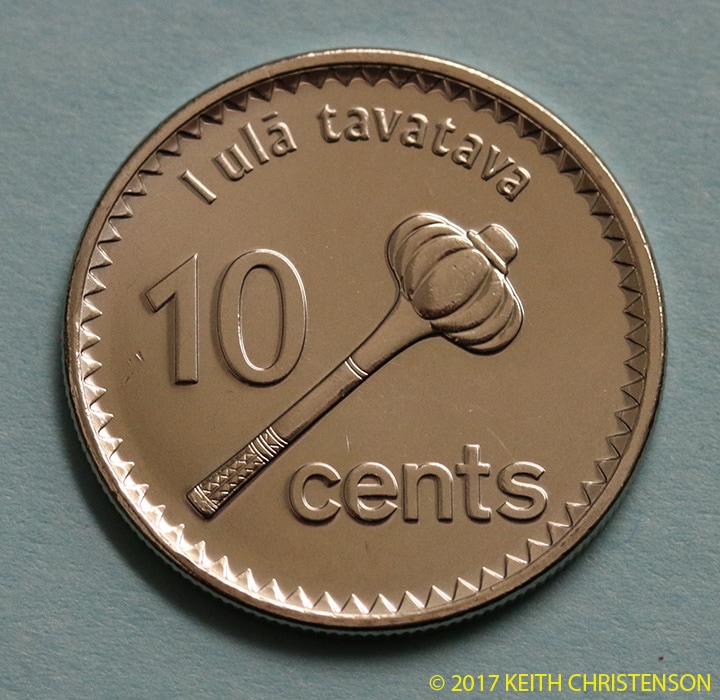First the coin. It is a 10-cent piece (about 5 cents US), about the size of a US nickel and made of nickel-plated steel. The minting of these was done really well and uncirculated examples can be really sharp looking.
On the obverse is the country name, the date, and the local name for the bat: Beka mirimiri. The bat is the Fijian monkey-faced bat or just the Fiji flying fox (Mirimiri acrodonta). There are six species of bats on Fiji, three of which are flying foxes, and this is by far the smallest of the bunch. It measures just about 4 inches from nose to butt, ignoring all the wing and tail membranes.
It is among the cutest bats in the world, with a roundish face and, believe it or not, bright orange eyes. It is also one of the world's rarest bats, known only from above 3,000 feet elevation in the montane cloud forest of Des Voeux peak on the island of Taveuni.
While the local people see this bat on occasion, for the most part it was only known from a few museum specimens until rather recently. Conservationists have worked hard to learn more about the bat, but it is so rare that this has been a very difficult task. Yet it has been captured in the wild, including a pregnant female, and work continues to learn more about what it eats, where it roosts, what its habitat requirements are and if there are any populations on other high peaks among the islands.
The reverse has the 10 cent denomination on it. Note that pretty much all the world puts the number 10 on a coin worth 10 whatevers, but the US continues to confuse international tourists and new arrivals by NOT putting a 10 on its coin but the words ONE DIME. Just a bit of coin trivia there. The object in the middle is the traditional throwing club in the Fijian culture.


 RSS Feed
RSS Feed